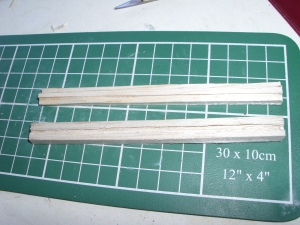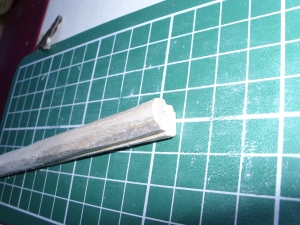I am currently working on a project called Picking Darcy’s Pocket, where I will be using objects that might have been found in the pocket of a Regency gentleman, to discuss various aspects of the period. I will be using either genuine or facsimile artefacts, and was recently thinking about writing equipment. A gentleman might have a pen, ‘travelling’ pens were made where the nib was fitted into the handle and there were ‘travelling’ inkwells with specially tight lids, but these often leaked. Therefore more commonly gentlemen used pencils when travelling. Most pencils were similar to those we use today, a lead made from a strip of graphite, surrounded by a wooden sheath. Though there was one slight difference, as the graphite was quite valuable the end of the pencil had no lead in it, hence in Emma. ‘It was the end of an old pencil,—the part without any lead.’ But our gentleman might have had a propelling pencil. The mechanical pencil as we know it was invented in the 1820’s, but before that there was a curious wooden propelling pencil. The only surviving examples come from two shipwrecks, on opposite sides of the world. HMS Pandora which was wrecked on the Great Barrier Reef in 1791 and the East Indiaman Earl of Abergavenny which sank in Weymouth Bay in 1805. I have often handled the examples from the latter wreck, so decided to try and make a copy. The version was made of balsa wood, as it is easy for the unskilled worker to carve. I also made the pencil thicker than the original, simply because I didn’t have the tools to do the fine carving, that the Georgian carpenter would have had.

 Carving the two sections
Carving the two sections
First the two halves of the pencil were cut out, and the ‘male’ and ‘female’ section were carved. The groove in the ‘female’ was the hardest part to carve as when fitted together it has a dovetail section. When the two parts slid together easily the pencil was whittled to give it a circular section.

Fitting the two sections together

The final cross section, showing the ‘dovetail section of the joint and the grove for the lead.
The pencils from the Earl of Abergavenny have square ends, they were part of a collection of artists equipment being taken out to India and the Far East for sale to western artists, and would have been trimmed to a point. Ordinary pencils found on the Abergavenny also awaited trimming (just like modern pencils) the one from the Pandora had been pointed. 
The reconstructed pencils. 
Using the reconstructed pencil.
The pencil works by holding a separate lead in a groove in the ‘male’ section. It is held in place by pressure between the two parts of the pencil. As it wears out it can be pulled down, until the lead has to be replaced. This must have been a very inefficient system as, when the modern type of propelling pencil was developed in the 1820s, this type of pencil vanished almost completely. As for the phrase ‘Putting Lead in your Pencil’, signifying increasing male sexual potency, that phrase must be connected with a propelling pencil (the only type of pencil you can put lead into), but is recorded no earlier than the 1940s (in Australia) though I suspect is very much earlier. It leads to my next Regency reconstruction, but that will be another story.

Fascinating. Why don’t you tag your posts with a set of explanations eg original propelling pencil, regency period etc, plus the ships you cite and any other search terms you might use if you were searching for this. Put a comma between each phrase. Similar,y categories. You’ll generate traffic that way. Shame not to try given the effort you are going to.
LikeLiked by 2 people
Thanks for the advice, have done so
LikeLiked by 1 person
This is fascinating – see Geoff – newcomer award needed! ;p I can’t believe your brother made that pencil I’m dead impressed 😊. It’s such a shame so many traditional skills are being lost – I’m telling you we will live in a dystopian future where no one can write one day. I’m sure of it.
LikeLiked by 1 person
Well as Gordon would admit, the experimentation hasn’t always been a total success. Dad accused him of trying to poison him when he tried to recreate the food stuff of the ancient Britons and offered it to Dad.
LikeLiked by 2 people
Haha!! Yeah not sure how much of that I’d eat either although the experimentation is still impressive and fascinating
LikeLiked by 2 people
Well, after that failure (though I will say in my defence I was 8 or 9 and it was one of my first attempts) I always try my reconstructions myself, before I will ask anyone else to try them. However I have just made something I have no intention of ever trying, so watch this space.
LikeLiked by 1 person
Absolutely fascinating to both me and Jackie. Well done
LikeLiked by 1 person
Very interesting – I love the idea of examining what would have been in Mr. Darcy’s pockets. That’s genius!
LikeLike
Yes a very interesting post!!
LikeLike
Pingback: Picking Darcy’s Pocket – A Matter of Protection | The Curious Archaeologist